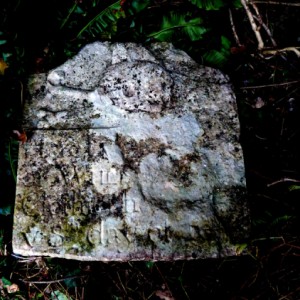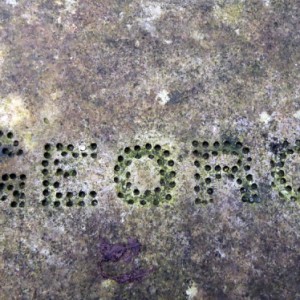Resting place
A rustic chair, fastened into place, is all that suggests any human presence in the ancient Quaker burial ground at Lambston in south Pembrokeshire. I've been intending to visit this place for years and only accomplished it today. Dissenting Quakers were once numerous in this part of Wales but as elsewhere in Britain were shunned and persecuted as a breakaway sect from the established church. Many emigrated from West Wales to America, mostly to Pennsylvania where Pembrokeshire place names such as Haverford and Narberth still exist today.
The families that remained buried their dead here where a small square of land was provided by a sympathetic farmer 'in the middle of nowhere' and surrounded now by fields of grazing sheep. The burial ground is approached via a narrow avenue of beech trees; it's a walled enclosure within another walled enclosure. The walls are barely visible so clothed they are in ivy and the burial area itself is a mass of brambles, hart's tongue fern and withered stalks. (It appears that there has been no upkeep for the past two years owing to the pandemic; before that there were occasional work parties that attempted to keep the place accessible.)
There were only a few weathered grave markers visible which surprised me until I remembered that Quakers don't use them, preferring to avoid ostentation whether alive or dead.
"In death, as in life, they believe in equality of status. Subsequently, Quakers believe it improper and unpleasant to elevate and celebrate certain people above others through elaborate headstones. Initially, all tombstones and grave markers were banned by the Quaker movements, believing that any lasting memorial would commemorate one above others, however plain or small in size. During the formation of the Quaker movement in 17th century England, churchyards were filling with increasingly elaborate memorials, so the decision to forego them altogether was revolutionary in a sense. Quakers saw these towering monuments as an indulgence in extreme vanity, with the middle and upper classes exercising ‘dominion in death’'.
The oldest memorial here, which had been set in the wall but has fallen off and broken, dates from the 17thC. The name is illegible [possibly William Clothier] but the skull and crossbones motif is still visible. (I've contacted local people about this and am assured it's going to be repaired.) You can see it in the first extra, the second shows the unusual lettering on George Phillip's recumbent gravestone. Were the 'dots' to secure lead letters that have gone or were they a low-cost form of engraving?
Further information about this burial ground and Quakers in Wales see here
https://lambstonparish.wales/quaker-burial-ground/
https://britishlistedbuildings.co.uk/300025149-walls-of-friends-burial-ground-camrose#.Ye1Vk_7P02w
https://www.bbc.co.uk/blogs/wales/entries/fcfbb662-23b6-3859-b521-758de2c9d08c



Comments
Sign in or get an account to comment.


